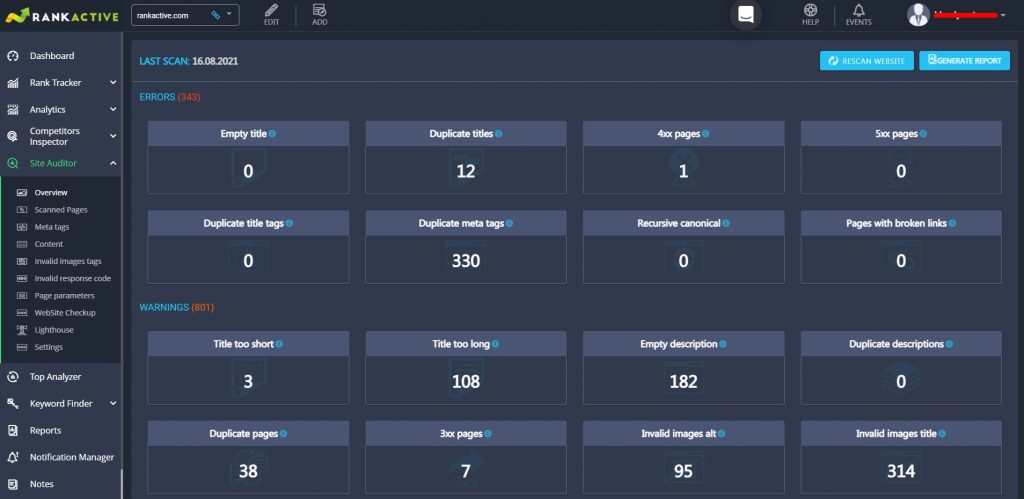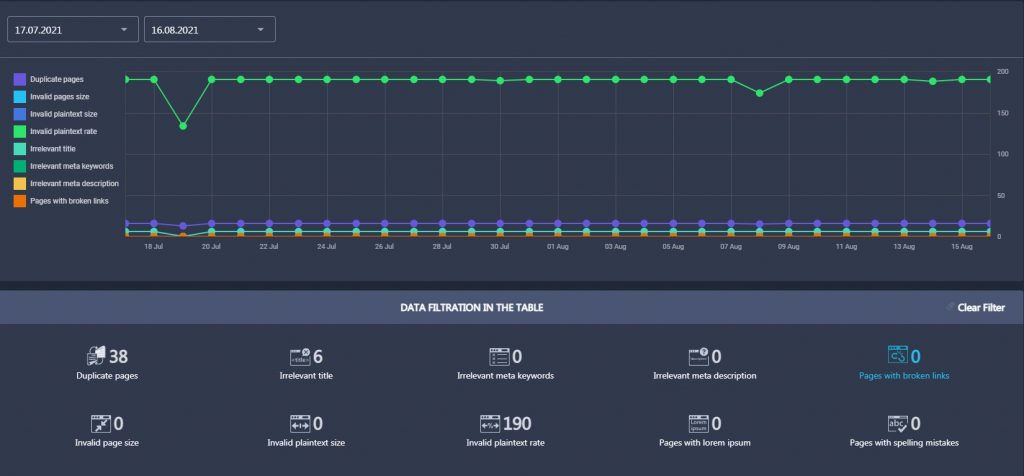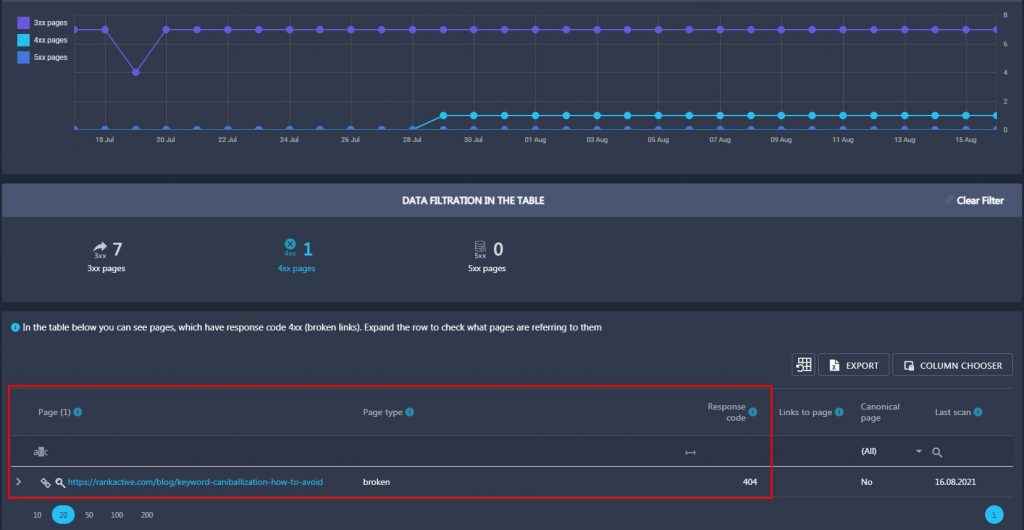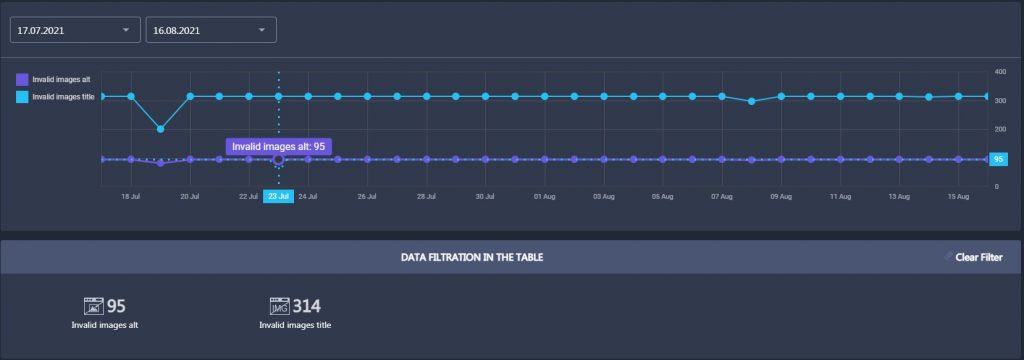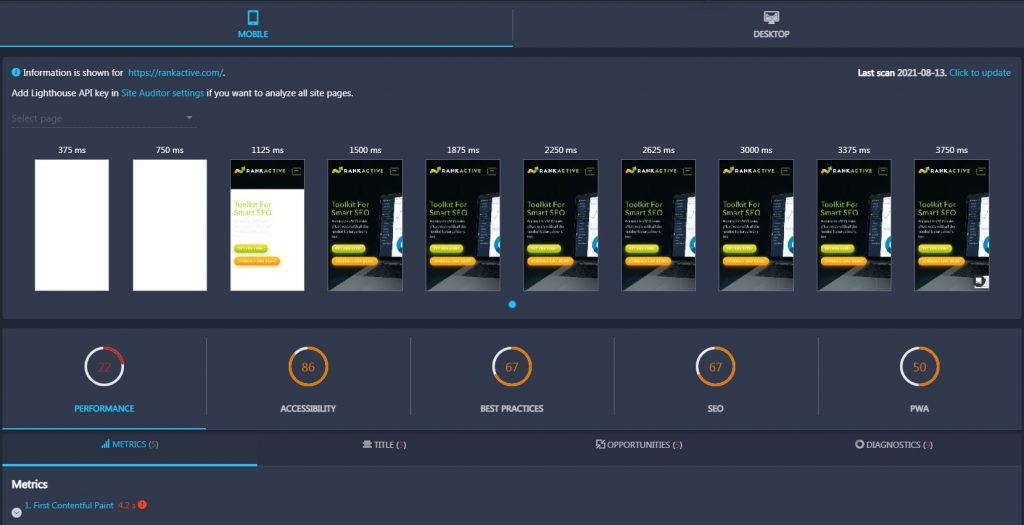Digital Marketer’s Guide to an In-Depth Technical SEO Audit
16 August 2021 Leave a comment TECHNICAL SEO
When a startup team starts a business, they often try to get it off the ground as quickly as possible. They concentrate on crafting a simple website, launching it, and jumping straight into sales.
As a result, the site’s quality is neglected — the website lacks content and slowly accumulates numerous SEO issues.
Due to poor resource allocation and website management, various on-page problems don’t take long to come. Crawling and indexing errors, pages with broken links, duplicate content, 404 response codes — all of these and numerous other issues appear, damaging website rankings.
While a business actively attracts clients with different marketing techniques, poor website quality prevents it from getting organic traffic, leading to potential revenue loss. What’s more, it drives away the visitors who land on the site through ads, which also dramatically decreases conversions.
That’s why if you still care only about sales and ignore your site’s quality, you should change your approach. By getting rid of technical on-page issues, you will improve your website, attract more traffic, and eventually convert better.
But first comes an in-depth technical SEO audit.
It’s impossible to spot all on-page issues with a naked eye, so you should use advanced tools to perform an SEO audit. There is a variety of instruments that can run an in-depth SEO analysis of your website. The common solutions are:
- DeepCrawl – used for spotting duplicate content
- Screaming Frog – used for checking Schema, Google Analytics code, Tag Manager, flashes, javascript issues, and others
- Google Search Console – used for monitoring various search parameters affecting site visibility: backlinks, sitemap, keywords, crawl and indexation issues, etc.
- Google Analytics – used for tracking website traffic and analyzing user interactions with the website
- Pingdom – used for checking website performance
The problem with all of these tools is that you have to spend a lot of time and effort learning how to operate each one of them properly. Plus, one tool will probably not provide all the data you need, so you will have to switch between several platforms, managing multiple logins and passwords.
That brings us to another issue — data scattering. You should agree that it would be much more convenient to keep everything in one place instead of having different pieces of information across multiple platforms.
Collecting data from many SEO tools takes too much administrative work. And what’s even more frustrating — keeping your data in several places may lead to its inconsistency and loss.
Luckily, it’s possible to avoid these problems and complete a technical SEO audit using something simpler yet very comprehensive. With the help of all-in-one SEO audit software, you can overcome disorganized data issues and successfully solve technical on-page errors.
A technical SEO audit is not as complicated as it may appear at first sight. There are many all-in-one SEO platforms that offer various tools to perform an audit without knowing much technical stuff. RankActive is one of them.
RankActive is an SEO software platform that enables you to do everything yourself without hiring an expensive SEO agency (and you never know if you can trust one).
In fact, most marketing agencies and SEO firms use similar SEO audit tools along with Google Analytics, Webmaster Tools, and Search Console. So why can’t you?
Using RankActive’s Site Auditor, you will discover numerous on-page issues, such as duplicate tags, duplicate titles, 4xx and 5xx pages, pages with recursive canonicals, and so on.
The tool will give you a sense of where your site lacks performance and what can be optimized.
One of our clients shared their approach to providing SEO services working as a freelance SEO expert.
They use Site Auditor to spot on-page issues on their customers’ websites. The first things they usually look at are:
- Robots.txt files availability
- Missing SSL certificates
- URL issues
- Redirects and canonical pages
- Broken links
- Invalid alt attributes for images and invalid meta descriptions
- Poor website performance and Core Web Vitals scores
If there is something wrong, the SEO expert knows what to do because they can see a clear picture as to what’s happening on the website.
Why you need Robots.txt
Robots.txt file is completely optional and used for blocking certain URLs from being crawled. For example, when you don’t want to rank your privacy policy page on Google, you can add this page’s URL to Robots.txt so that it won’t be visible in SERP.
You can learn more about using robots.txt to prevent crawlers from ranking unnecessary pages in this Google Search Central post.
Missing SSL certificate
According to Google’s security requirements, SSL is something that every website should have to rank better. However, from our observations, we’ve found that a bunch of websites rank just fine without any SSL certificates and are not blocked by Google.
You can have no SSL certificate and still rank well. However, you never know when Google will update their policy and make it more strict, so it’s a good idea to be prepared. Given that many domain registrars install SSL certificates for their clients for free, it shouldn’t be much of a problem.
URL issues
URLs or permalinks are the things that need to be fixed at the very beginning. Having a poor link structure may shake your SEO indirectly, nullifying your efforts.
You may miss out on the opportunities to use some keywords in the URL if it looks something like this: “https://sample·com/3316e236/”. On the other hand, when your link looks good, for example, “https://sample·com/folder/article-2018/”, you make it appear aesthetic and user-friendly.
Make sure to check out our blog post on 5 ways to make your website visible on Google search, where we dig into the URL structure a little bit deeper while also giving you valuable advice to rank better on Google.
301 redirects and rel=”canonical” attributes
301 redirects and rel=”canonical” attributes are the parameters that we talked about quite a lot. We even have an article on how to set them and why they’re needed — check out SEO-friendly ways to set up 301 vs canonical redirects without losing traffic. Also, you can learn whether redirects are bad for SEO in this blog post.
301 redirects are permanent redirects. You should use them when:
- Permanently moving your website or one of its pages to a new location (new URL)
- Consolidating content to avoid keyword cannibalization and duplicate content
- Changing your CMS
- Switching from http to https
- Removing pagination
- Merging several websites into one
As for canonical attributes, they’re used to indicate the main page when you have two or more pages with the same or similar content. They tell the search engine which of those pages should be indexed.
After adding the tag, Google will only rank the page you specified as canonical, removing the non-canonical ones from SERP. That can help you solve duplicate content and keyword cannibalization issues.
Let’s say you have two articles: one is old and the other is new. You covered the same topic in the newer blog post just to update the information. In this case, you can place the rel=”canonical” tag on the recent article to complement the older one or vice versa.
However, website owners often misuse canonical tags: there is a common issue when one page has a canonical tag to the other page while the other page has a canonical tag to the first one. That causes a recursive canonical issue. The search engine doesn’t know which page to rank because they’re both canonical. As a result, it may remove both pages from the index or rank the unwanted page.
Luckily, Site Auditor helps spot such critical errors so that you will have time to fix them before they cause too much trouble.
Broken links or 404 pages
Take this scenario: you changed some folders on your site and forgot to set up redirects or update your links. As a result, some of the links in your content are now pointing to 404 pages.
That frustrates your visitors and dramatically decreases the time they spent on your site as well as the number of page views per session. And what upsets users is also bad for your conversions.
Luckily, Site Auditor can help you spot such issues to fix them afterward.
The tool rescans websites every 24 hours, always providing you with up-to-date data. However, if you need it faster, you can initiate a scan on demand with just a click.
Invalid alt attributes and meta descriptions
When website owners upload images to a CMS, they often forget to specify alt and title attributes. While this by no means damages rankings, it’s still bad for website visibility.
The thing is, when you specify alts and titles, your pages start ranking in the Images section of Google SERP. Thus, if you leave the fields blank, your site won’t appear in that section, which may decrease its organic traffic.
That’s why it’s important to specify alt and title tags of images when uploading them. And in case you forget to do it, Site Auditor will always remind you.
Poor website performance and Core Web Vitals scores
It’s critical to make a website perform well both on desktop and mobile devices. As we mentioned in our recent article on SEO trends, smartphones are taking over the world. Thus, the vast majority of your visitors are landing on your site from their smartphones.
If your site loads for too long or doesn’t have a responsive design, users won’t convert, no matter how good your sales funnel is. To avoid this, make sure your site is mobile-friendly.
Site Auditor’s Lighthouse feature will help you analyze website performance for mobile and desktop devices. Moreover, it will provide you with valuable tips on improving it.
What’s even more important is that you’ll be able to check your site’s Largest Contentful Paint and Cumulative Layout Shift scores, which are two crucial Core Web Vitals metrics. It’s official that Google will be ranking websites based on their Core Web Vitals scores, so you better prepare while you still have time.
There are lots of tools that allow you to run technical SEO audits. However, very few provide complete on-page data. To get all the information you need, you often have to use several external instruments, managing countless logins and passwords.
When you employ multiple tools, you’re also making it hard to properly monitor on-page metrics. Your data is scattered among different software, so it’s very easy to get confused or, even worse, lose the data.
That’s why it’s crucial to have an advanced SEO tool that provides all the valuable on-page metrics in one place.
With RankActive, you can monitor over 30 on-page metrics and track your progress over time within a single platform. With RankActive, you can create website audit reports in a click instead of handling multiple Excel files and manually updating them on a regular basis. With RankActive, you can keep your website nice and clean, meeting Google’s standards without wasting your budget.
So why hesitate?
Create your account today and use our tools for 14 days for free.
Tags: SEO audit, Site Auditor, technical audit, website audit
Like this article? There’s more where that came from.
- 5 Questions to Ask Yourself Before Paying for Rank Tracking Software
- 5 Serious Mistakes Beginner SEOs Make and How to Fix Them
- Why We Use Google’s New Link Attributes and You Should Too
- Title and Description in 2021: Why Google Rewrites SEOs’ Meta Tags
- What We Should Learn From Google’s “About This Result” Feature


